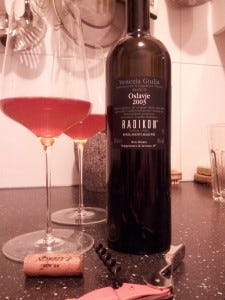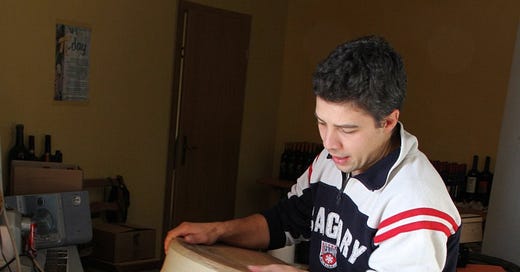Seeing the world through orange-tinted glasses - Radikon & Paraschos
Orange wines have been on my mind lately, having spent the last few weeks writing an article for Decanter. Needing inspiration, I pulled the cork on two rather fine examples of the genre. They were so good, they deserve some blog love here...
Radikon Oslavje

First up was Radikon's Oslavje 2003 - a blend of Chardonnay, Pinot Grigio and Sauvignon Blanc which is tasting quite sublime after more than 8 years in bottle.
This wine is quite cloudy, and has a dark amber colour, with brown tints. The nose is full of pear, apple and even red fruits. There is a hint of acetone, which I don't find offensive (think an older vintage of Chateau Musar) - but there is no denying there's a bit of volatility.
The palate is gorgeous, very fresh and alive, with pin-sharp acidity, more autumnal fruit and a lovely silky texture. Long, satisfying and astoundingly youthful. We just sat and finished the bottle, without food.
Paraschos Amphoreus
Two days later, I took a less well known wine round to fellow wine writ…
Keep reading with a 7-day free trial
Subscribe to The Morning Claret to keep reading this post and get 7 days of free access to the full post archives.




